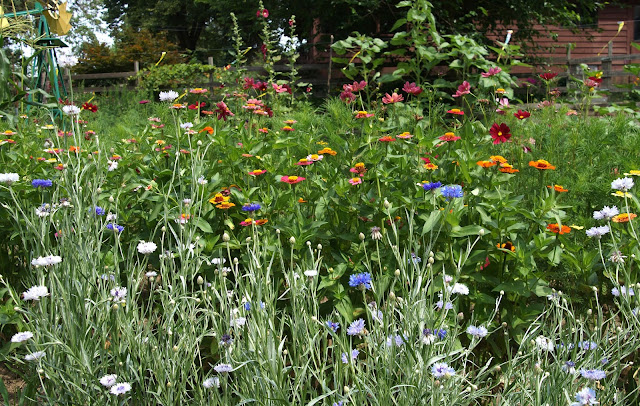Every once in a while I read a book
that changes my life. That happened to me a few years ago when I read Barbara
Kingsolver’s Animal, Vegetable, Miracle.
Barbara Kingsolver’s a biologist by education and
in her early career, but really, she was a writer, and has written bestselling
novels of fiction and nonfiction with a strong component of environmental
conservation and social justice. Some of
my friends say she’s too preachy, but I find her writing to be funny, human and
inspiring.
Animal,
Vegetable, Miracle is about her and her family’s move from Arizona to her
husband’s family farm in Southern Appalachia in Virgina, and their attempt to
eat only food that was grown so locally that they actually knew the producers.
In many cases, it was them as they grew vegetables and raised livestock.
I was completely captivated and
wanted to do the same thing. We would eat like royalty all summer, then can and
freeze and dry our huge bounty of vegetables! They would taste delicious
instead of the bland and poisonous stuff shipped into the grocery store from
around the world.
My husband read the book,too, and it
wasn’t hard for me to talk him, a life long gardener, into digging and planting
a huge garden, and plan to grow as much of our food as we possibly could.
So we did. And immediately
discovered a few things.
- The lot had very little topsoil, and lots and lots of thick, heavy clay.
- You can’t work full time, bike, hike, go camping AND expect a weed-free, healthy garden during the summer.
- Everything ripens at once, and it happens when you’re busiest at work, just want to come home and relax, it’s about 95 degrees out.
However. We persevered, and enjoyed
a Technicolor harvest of zucchini, green beans, cucumbers, pumpkins, broccoli,
Brussels sprouts, tomatoes—and more tomatoes. I took picture after picture and
we ate like field hands.
I sweated through the late summer
evenings and weekends, canning jars and jars of tomatoes, which were delicious.
We froze everything else…and it all tasted…not as good as what’s available in
the grocery store.
That winter was a time to regroup
and rethink the purpose of the garden. Aside from the hard work, we loved
planning it, looking at it, talking about it, harvesting from it—even the work,
if it wasn’t too hot and buggy and we weren’t already exhausted. I can’t explain how therapeutic it was to
simply go out and work in. One beautifully sunny, cool day, when I couldn’t
make up my mind which competing chore I should do—I thought, “what if this were
the last day of my life? What would I pick?” That made it easy: work in the
garden.
At the same time, I was pretty
disillusioned with our ability and circumstances to grow our own food. The
garden not only didn’t read the book, it had its own program, called “nature.”
Since then, we’ve struck a compromise
with the garden. We won’t hold it
completely responsible for feeding us, and in return it offers what it can.
That means I have free therapy, and we have plenty of stories to tell; every
year is different as to what foods we harvest. But what we mostly plant now are
rows and rows of flowers: zinnias, marigolds, cosmos, bachelor buttons. Just
because we like them, and we feel rich when we go outside and cut baskets full
of them whenever—and if!—we want.



No comments:
Post a Comment